Today is the World Day of Photography, recurrence established in 2010 on the initiative ofl photographer Australian Korske Ara. The date of August 19 because it coincides with the date of birth of the daguerreotype, the first procedure photographic for the development of images, dated 19 August 1837. In recent decades, photography has undergone an incredible development, from the first shots, difficult with bulky and very slow tools, to the smartphone, which has now become an extension from the hand, fast and automatic.

How photography was born
The word photography comes from the Greek PHOTÒS (light) and GRAPHìA (writing) and means writing with light. Already inantiquity the light room was invented, a tool used by painters to obtain more realistic paintings, but to fix the image it was necessary to paint it. It took centuries to arrive at the invention of the first cameras and therefore of photography studies in the field of optics, chemistry and photosensitive substances.
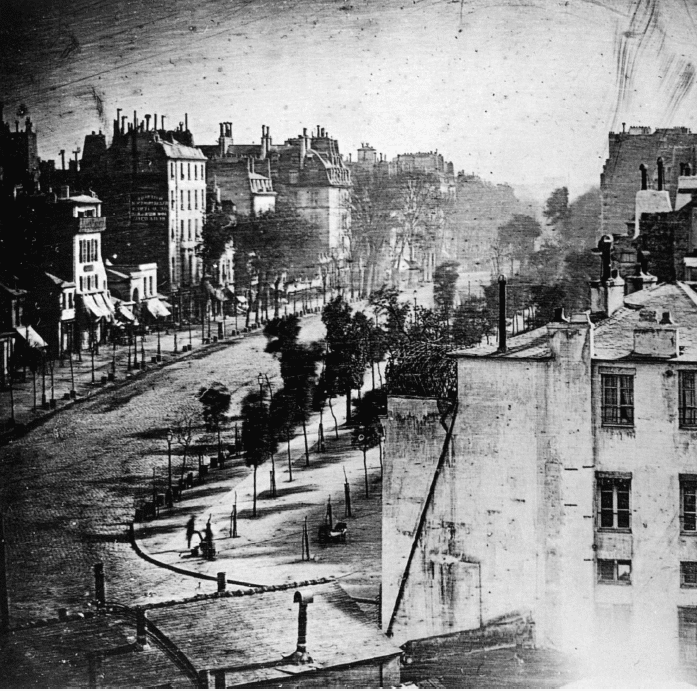 One of the first shots of Daguerre
One of the first shots of Daguerre
At the beginning of 19th century Frenchmen Louis-Jacques Mandè Daguerre and Nicèphore Nièpce, they studied the procedure a lot and in the end Daguerre succeeded in the enterprise. The first photographs are called Dagherrotipi, these are images fixed on a silver plate through a complicated and long work with chemical liquids. However, daguerreotypes are single images, of which you cannot have copies.
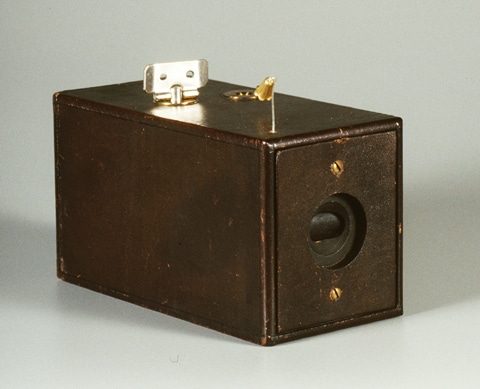 Kodak del 1888
Kodak del 1888
This problem was solved by Talbot, who invented the current Negative, initially called calotype, thanks to which you can make an infinite number of copies with a single photo shoot. The first real photograph was born.
In 1888 the photography took a step towards accessibility to the general public: American George Eastman invented the first portable camera, the “Kodak”. Cheaper and simpler than the complex machines produced up to that time. From the end of the 19th century to the present, photography has continued to progress. In 1947 the first color photograph arrived and in 1975 the first digital, both due to “Kodak”.
The spread of photography
Right from the start, photography aroused great curiosity thanks to the realistic nature of the images. Demonstrations often took place to allow the general public to witness the magic. Initially photography it wasn’t for everyone: landscapes, portraits of the bourgeoisie, the first war reports (intended, however, as “posed” photographs and sometimes more of propaganda than news). Nothing close to the “mass”. The turning point came with the Kodak portable and all the improvements that from that day made photography cheaper and within everyone’s reach. Around 1890, roll-fed machines replaced the plate-type machines in use up to that time.

If in the early days the photograph was intended for portraits of the rich bourgeoisie, then it arrived at the front, documenting the war and portraying the soldiers. The mass use of photography apparently followed the inventions that made it more accessible. From color films, to the reflexes of the 60s, to the first digital cameras… Every invention has made the camera more democratic. New technologies have meant that it became a cheaper and simpler tool, until the arrival of mobile phones with integrated cameras. Nowadays we all have a camera always in our pocket, thanks to the smartphone.
The shots that made history
There are shots that have contributed to making photography an art form, increasingly appreciated and desired by the general public. Some images are indelible in the collective memory and to celebrate World Photography Day we want to pay homage to some of these. You probably know many of them already.
V-J Day in Times Square di Alfred Eisenstaedt
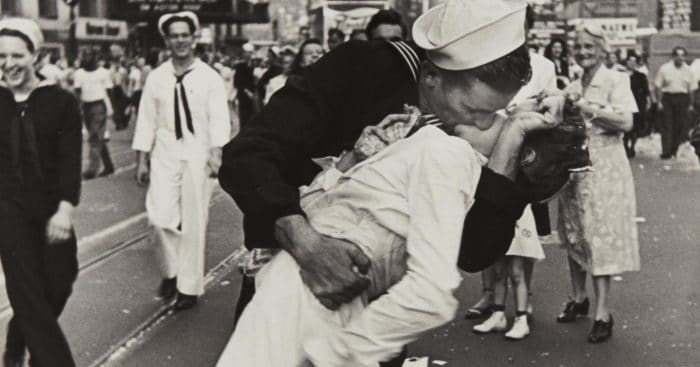
It was the day of the Japanese surrender, on August 14, 1945, the end of the Second World War. A moment of joy and passion between a American soldier and a nurse who meet again after a while in Times Square and exchange a kiss. A magical moment captured by the photographer Alfred Eisenstaedt, published in Life magazine. After a long time, Greta Friedman has been identified as the protagonist of this famous photograph.
The portrait of Che by Alberto Korda
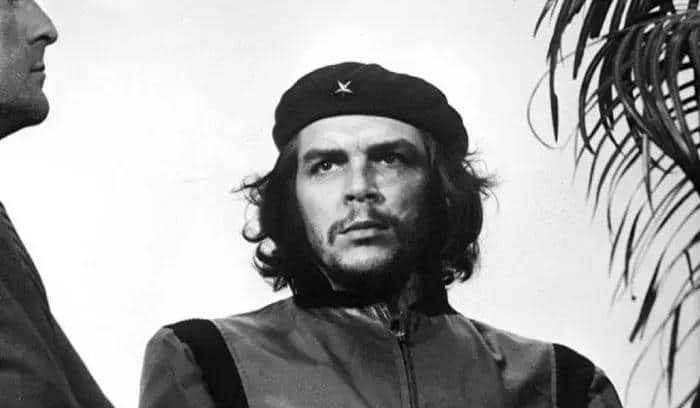
Regardless of his political beliefs, he does not remember this image Che Guevara? Somehow this photograph has become so iconic that it ends up on t-shirts, bags… The shot is from Alberto Korda who in May 1960 painted the famous portrait of the revolutionary during the burial of the victims of the Courbre explosion. The photo was awarded as “most famous photograph and world icon of the twentieth century ”from the Maryland Institute of Art.
The Falling Man by Richard Drew

A shot that shows a very strong worldwide pain and wound. Made during the attacks of 11 September 2001 by Richerd Drew, the photo shows a man falling from one of the World Trade Center’s twin towers. Many threw themselves into the void to escape the fumes and flames of the terrorist attack. Unfortunately, photography does not only portray joy and happiness but often immortalizes moments of suffering. We hope that reviewing these images will help not to make the same mistakes.
Chuck O’Rear’s Windows Wallpaper

You have all seen it a thousand times without ever asking yourself the question of where / by whom this photo was taken. In January 1995, National Geogrpahic photographer Chuck O’Rear made this image in Napa County, California. Did you know?
Steve McCurry’s young green-eyed Afghan girl
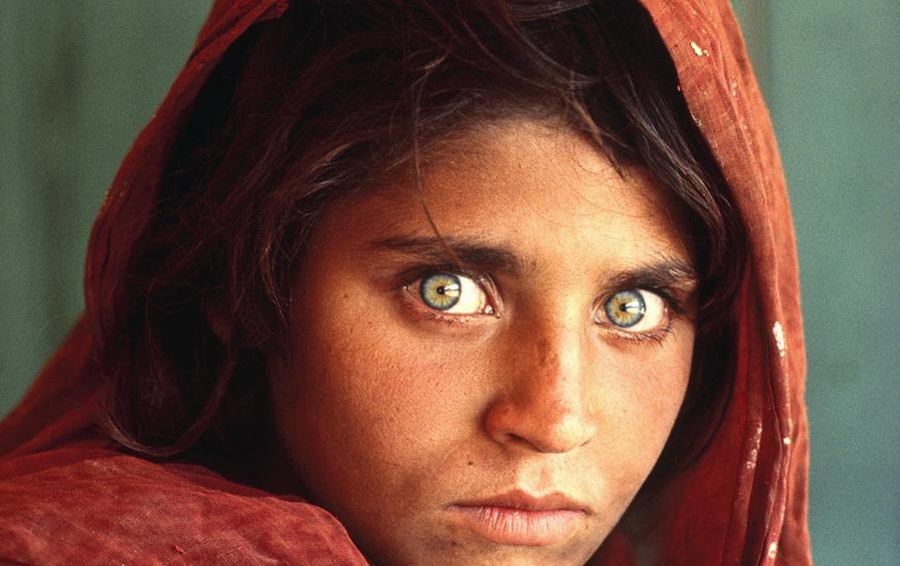
Taken in June 1984, this photo appeared on the cover of the note National Geographic magazine. The world thus discovered the beautiful eyes of Sharbat Gula, a 12-year-old refugee girl in Pakistan. He bewitched everyone, sensitized everyone, hit the mark. She recently met with photographer Steve McCurry again.
Lunch on a skyscraper, the most iconic photograph ever
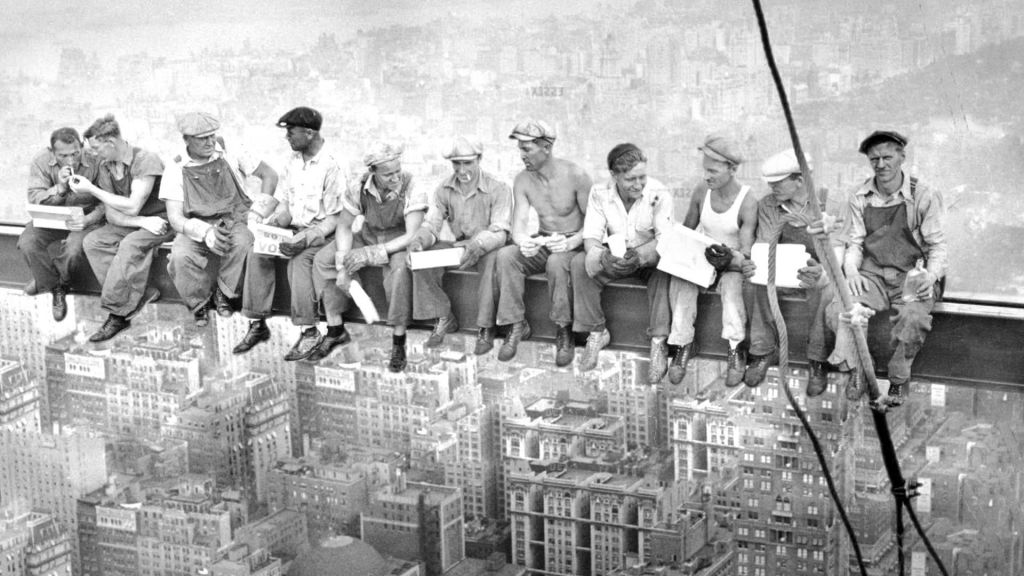
Eleven workers having lunch seated on a suspended beam at a height of 250 meters… It was the 1932 when this photo, now iconic, was printed on the pages of the Sunday supplement of the New York Herald Tribune. Face of the Great Depression of the city of New York, but also of the extraordinary ability of those men, none of whom show the slightest sign of discomfort.
Did you already know the history of photography? It is no longer an art form for a few, an accessible tool used by everyone in everyday life. Some more, some less, we all take pictures, we immortalize moments, memories. Images have become one of the most widespread and exploited means of communication by every channel. Who knows what Daguerre would think …






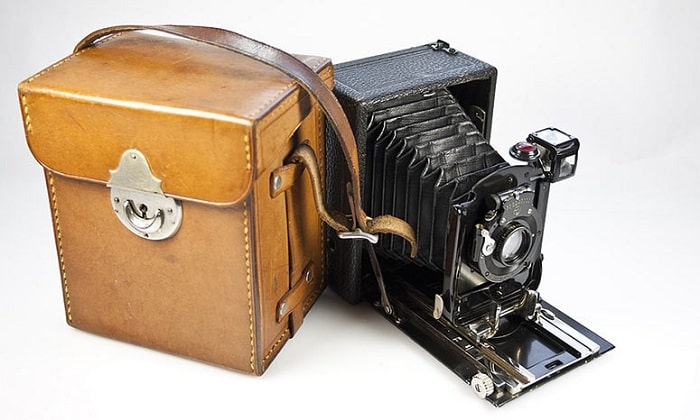









Leave a Reply
View Comments